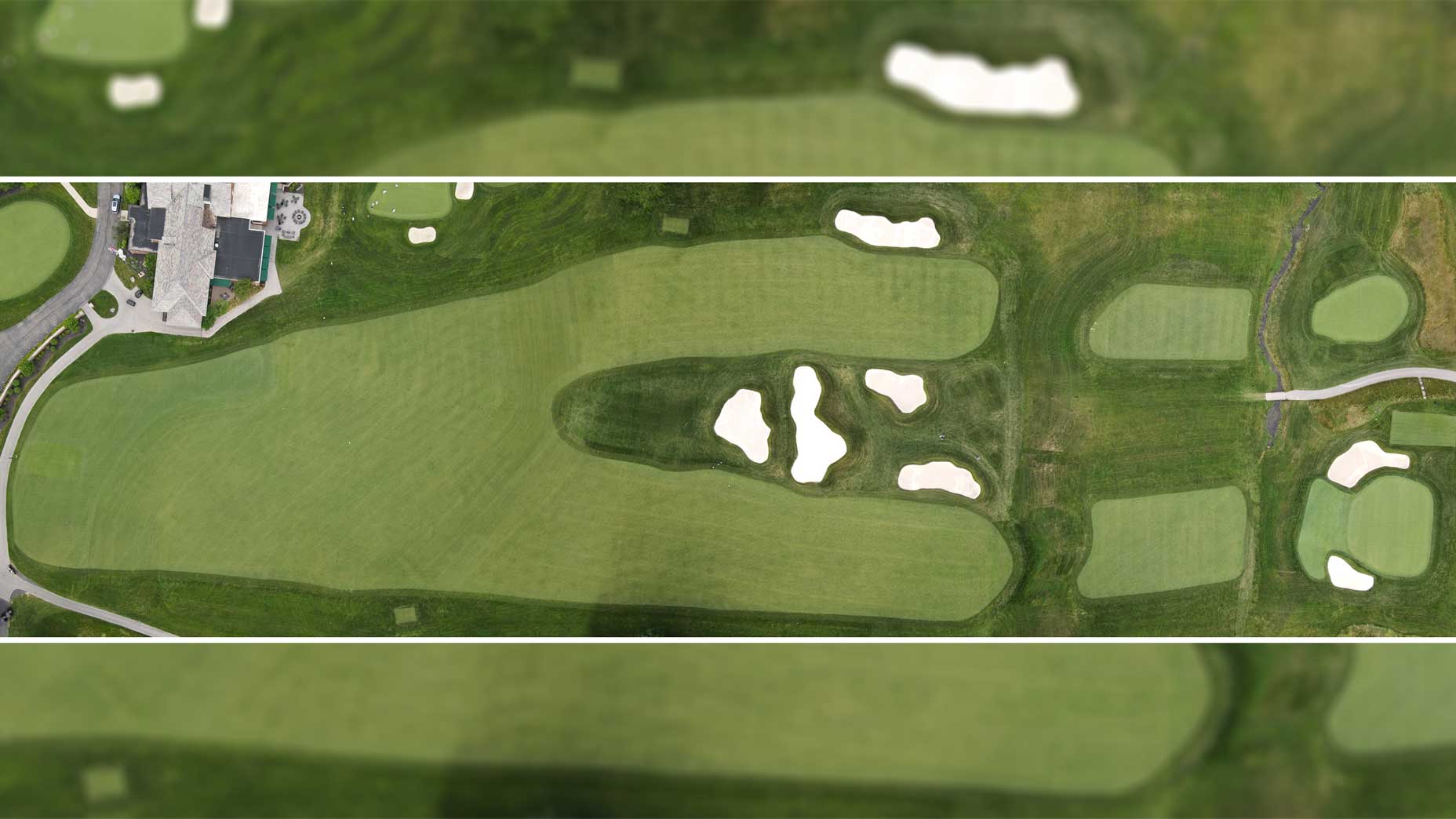If one of the tenets of great golf design is variability throughout a course, then the two holes you see in the photo above seem to be begging for help.
The 1st and 10th holes at Inverness Club, site of this week’s Solheim Cup, look like twins from the sky. Ross’ first layout of the course called for the 1st to run 365 yards and the 10th 346 yards. They even share a tee box, which is a beloved architecture trait, even if it does little to denounce their similarities. Making the turn at Inverness basically calls for a similar tee shot to your first of the day — your choice of club might differ by one. Like many parallel holes, these two share bunkers in the rough that lays between them. Each fairway is about 30 paces wide. Closer to the green, there are secondary portions of each fairway, both stretching about 50 yards long, and then another 25-yard interstitial before the green.
From a drone’s perspective, it’s difficult to imagine two holes pitched next to each other that could look more similar than these. But down on the ground, things are much different. Peep our video below for a good look.
As the Fried Egg laid out on YouTube, there’s actually some benefit to getting to the lower section of the 10th fairway. The closer to the hole, the better off you are — almost always, and especially for middle and back pins. As long as you hit the fairway, of course.
That doesn’t check out for the 1st. This hole plays slightly longer, so the lower section only comes into play on lay-ups from the rough or bunkers. From there awaits an elevated approach to a green with a false front, which can play all sorts of tricks on the spin control players try to dial in with their wedges. So playing from the upper fairway is ideal on 1, and going long into the green isn’t nearly as much of a penalty. On the 10th, fescue surrounds the back of the green, injecting all kinds of variability into what should feel like a more comfortable approach.
That little creek in front of the 10th sure looks insignificant. Two steps and a leap and you can clear the hazard in your FootJoys. From the fairway, it looks even less menacing, in part because it’s a full 15 yards short of any pinnable position on the green. Anything that lands in the creek is indeed a poor shot. But complex club choice and a poor shot? That’s how you bring the creek into play. The hole will play anywhere from 330 to 387 yards during the Solheim Cup, which just means we’ll see plenty of layup shots into the fairway. No harm done, so long as the bunkers are missed. But with hummocks left and right of the green, fescue long, a downhill shot from 125 yards to the smallest putting surface on the property … sending a pitching wedge into the sky is less comfortable than normal. Suddenly that creek is in prime position to gobble up any shots struck with indecision.
Funnily enough, the most obvious difference between these two holes is that creek. The trench just stops abruptly as it approaches the 1st hole. It takes a break, flowing underground, and is evident again on the other side of the hole, snaking its way through the adjacent neighborhood. Alrighty then — hazard on the 10th, not on the 1st. Did Donald Ross get tired of digging? Perhaps the extremely elevated, blind pitch up to the green is enough difficulty as is. It’s pretty great we’re asking these questions 100 years later.
